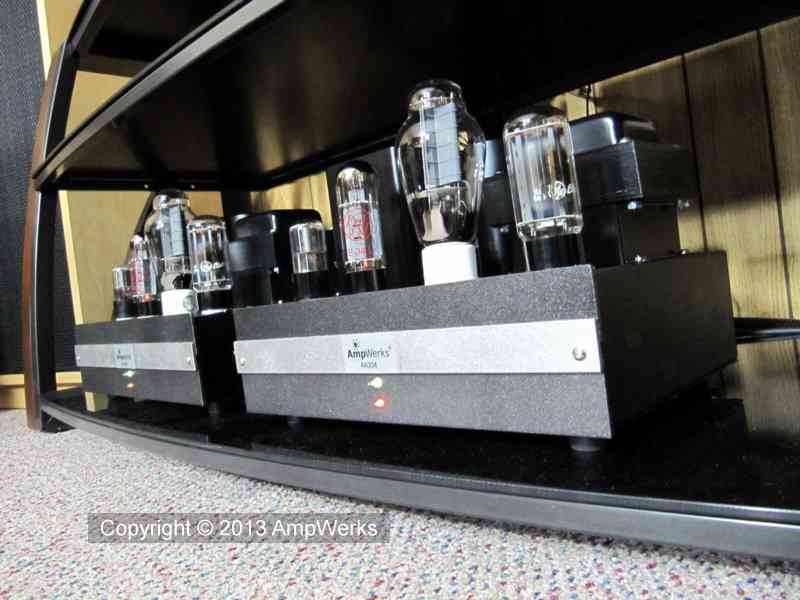
AmpWerks AA334 Final Testing
Here are our babies up on blocks on the test bench. Each amplifier weighs 21 pounds.
I burned them in over a period of a week or so. The voltages remained stable during that time and the amps ran nice and cool. The power transformers only became warm to the touch after several hours.
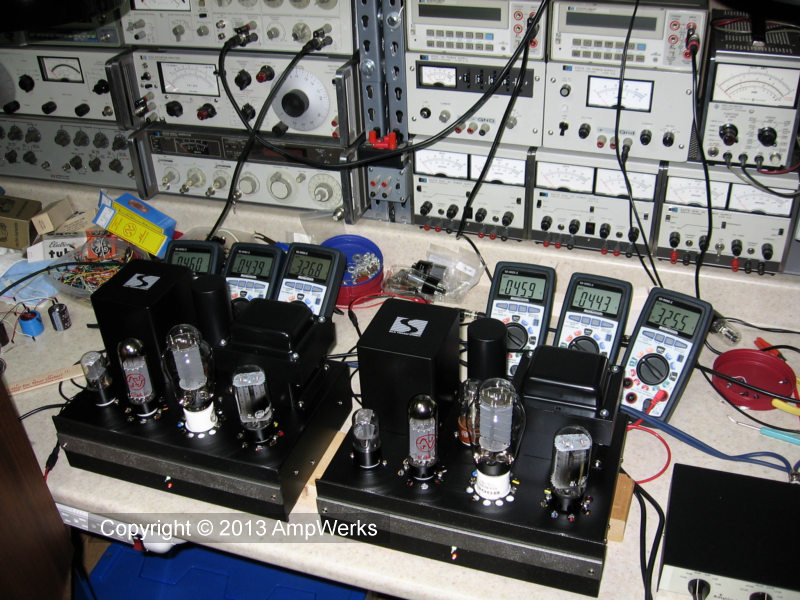
Below is the frequency response curve of one of the amplifiers measured at the 8 Ohm speaker terminals. The response is ruler flat up to 25 KHz. The measured -3 dB points are 20 Hz and 40 KHz.
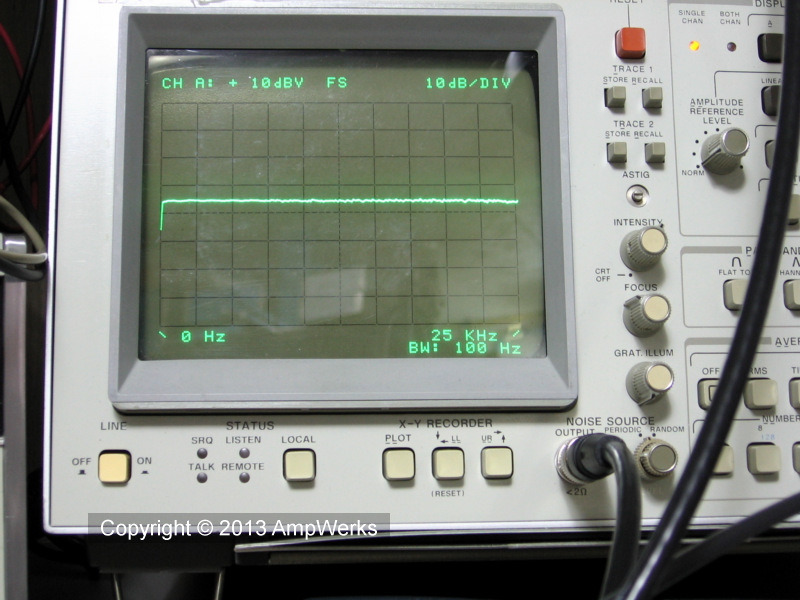
Here you can see the frequency distribution of a 1 KHz sine wave at 1 Watt into 8 Ω measured at the amplifier's output terminals. The spectrum analyzer's horizontal scale is zero to 5 KHz and the vertical scale is 10 dB per division. Second order harmonics are more than 50 dB down, and odd order harmonics are not even visible on the display. This is good.
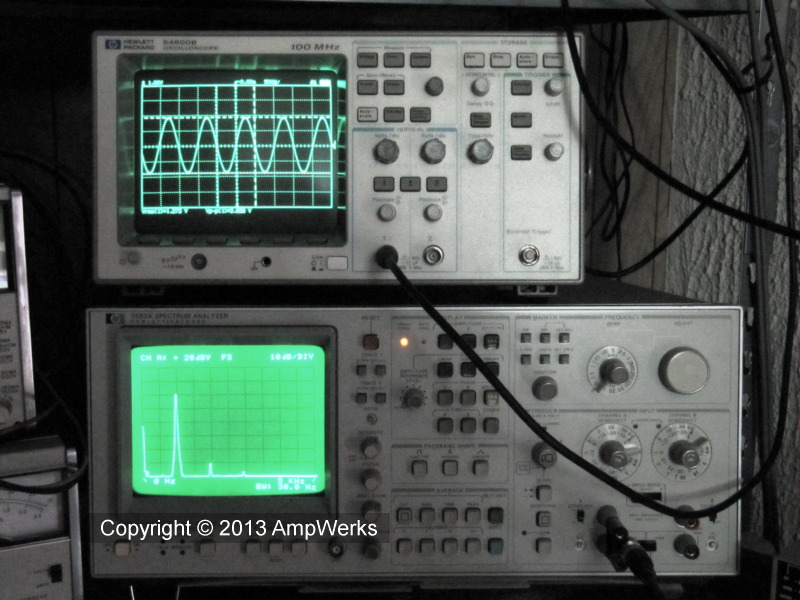
Here are the AA334s on the burn-in bench. Our trusty V-DAC plugged into the shop computer is providing music for our testing sessions. Sure beats listening to sine waves.
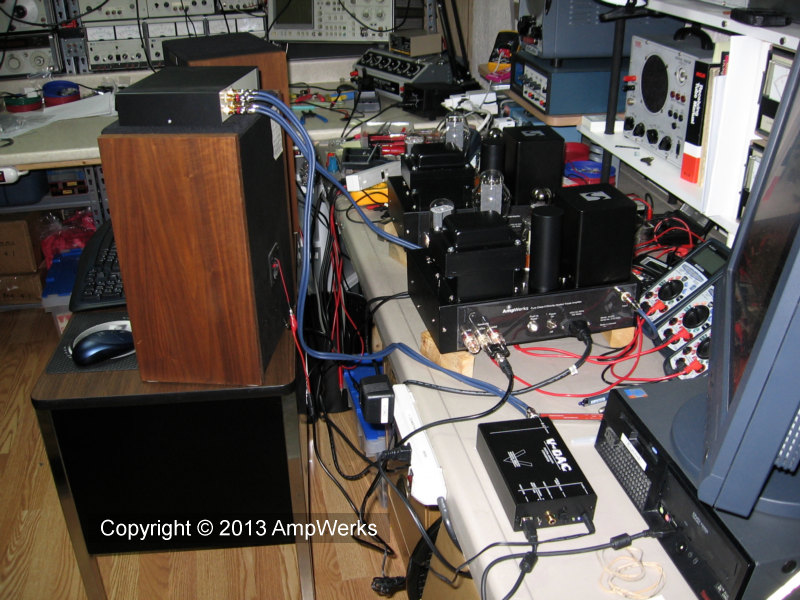
This is a bottom view of one of the AA334s with the pilot lights and the bypass caps installed. One of my design criteria was to use only traditional methods and components, hence the neon pilot lights rather than LEDs. The orange pilot indicates that power has been applied to the tube heaters, while the green pilot indicates that high voltage (B+) is present.
Readers with a sharp eye might notice that I upgraded the 1uF 630V Solen capacitor between the EL34 plate and the 300B grid to an Obbligato Gold Premium of the same value.
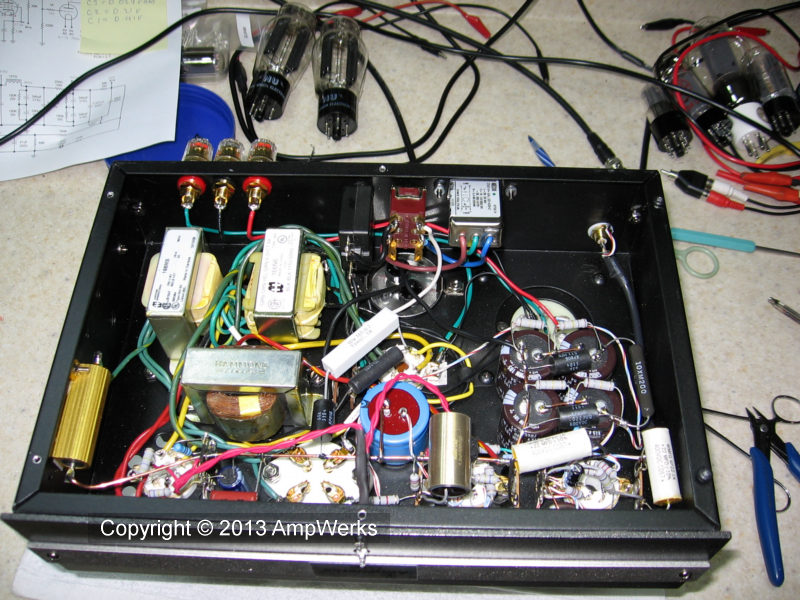
Here are the finished AA334s happily powering our Klipsch Cornwall II speakers.
Each speaker has a 15 inch woofer in a bass reflex enclosure, plus horn loaded midrange and tweater drivers.
Paul Klipsch named them Cornwalls because they are equally effective when placed in a corner or against a wall. Klipsch Cornwall speakers were introduced more than 50 years ago and are still in production. Their high sensitivity (101 dB @ 1 Watt/1 meter) makes them a good match for low powered single ended Class A tube amplifiers.
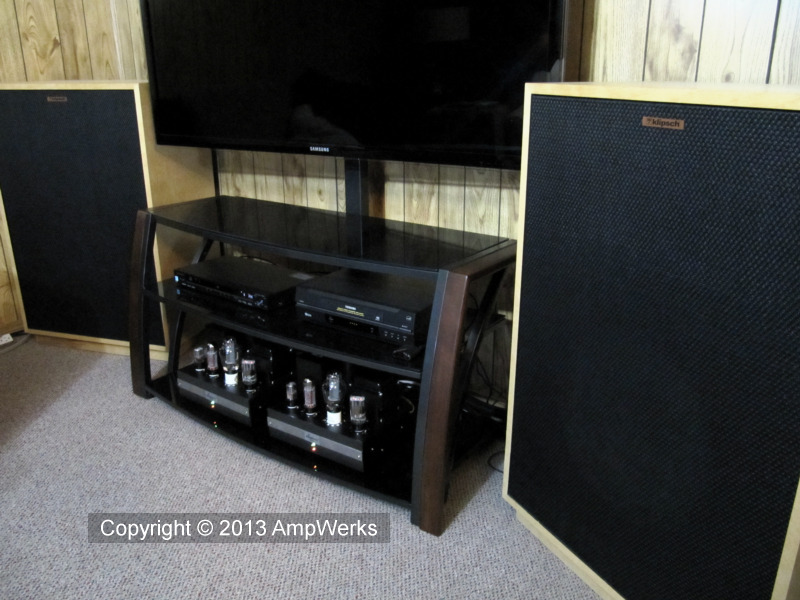
This was a great project. It was fun, I learned a lot, and the amplifiers exceed my expectations. They certainly measure well.
So how do they sound? Well... there might be some substance to this DHT SET thing after all! I am impressed.
In my listening tests so far I could find no area where they are lacking. Bass is strong, tight and musical, vocals have clarity and presence, instruments seem to have plenty of space around them. The AA334s have no problem driving the speakers to painful sound levels and yet I heard no trace of clipping. The sound was never tiring even after hours of listening.
The Cornwall IIs are 8 Ohm speakers so naturally I connected them to the amplifier's 8Ω output terminals. Later out of curiosity I switched the speakers to the 4Ω terminals and found I prefer the sound. Perhaps the bass has a touch more definition... not sure. It's subtle.
The program sources we used for our listening tests:
- Technics SL-15 direct drive linear tracking turntable
- Hagerman Bugle phono stage
- Acer PC, Windows 7 Home, Blu-Ray drive
- Soundblaster X-F1i Titanium HD sound card (with stock op amps)
- Musical Fidelity V-DAC
- Bent Audio TAP AVC-1 Slagleformer-based passive preamp
- AmpWerks SP-96R remote control vacuum tube preamp
Our reference amplifiers:
- Bryston 3B 125 Watt per channel solid state stereo amp
- Heathkit AA-151*
* Our 50 year old AA-151 has been recapped and converted to a basic amp
These are both excellent sounding amplifiers in their own right.
The AA334s certainly hold their own in comparison to these classic amps. I will have to do a lot more listening to determine their strengths and weaknesses. I'm going to continue listening, tweaking and comparing. When the amps have a few hundred hours on them I will post an update.
